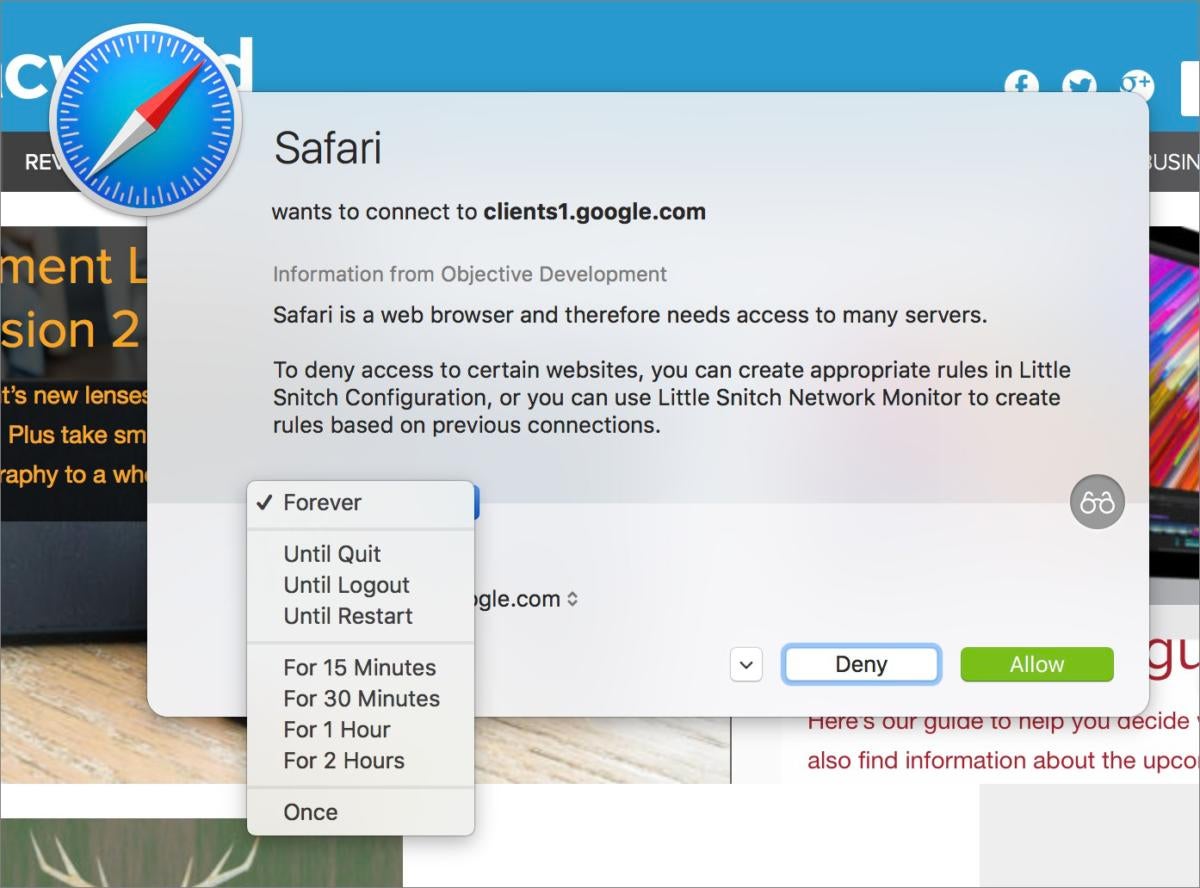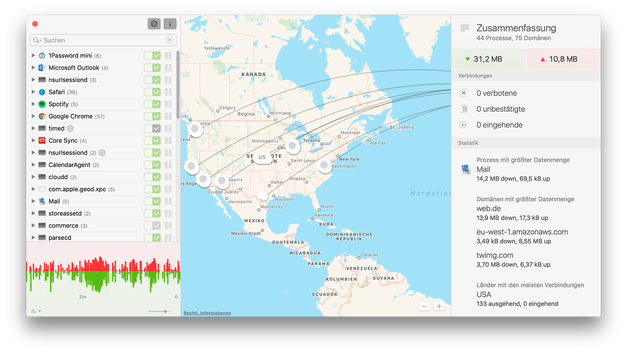Objective Development has released Little Snitch 4.5, bringing new features and improvements to the network traffic management utility after months of focusing on compatibility with macOS 10.15 Catalina. The update now bundles the integrated Research Assistant’s online database with the Little Snitch app, preventing code identity checks from needing an online connection to Objective Development’s Internet Access Policy. Little Snitch 4.5 also now shows accesses to the Berkeley Packet Filter (BPF) in the Network Monitor, improves rule creation from within the Network Monitor, improves editing multiple rules at once, fixes detection of the remote endpoint name for Viscosity VPN, resolves a crash that occurred when other programs wrote garbage to the System Configuration, and fixes a bug that misplaced geographic labels on the map. ($45 new, free update, 40.5 MB, release notes, macOS 10.11+)
| Developer(s) | Objective Development Software GmbH |
|---|---|
| Stable release | 5.1.1 (February 26, 2021; 2 months ago[1]) [±] |
| Written in | Objective-C |
| Operating system | macOS |
| Available in | German, English, Chinese, Japanese, Russian |
| Type | Firewall |
| License | Proprietary |
| Website | https://obdev.at/products/littlesnitch |
Little Snitch is a host-based application firewall for macOS. It can be used to monitor applications, preventing or permitting them to connect to attached networks through advanced rules. It is produced and maintained by the Austrian firm Objective Development Software GmbH.
Whenever an app attempts to connect to a server on the Internet, Little Snitch shows a connection alert, allowing you to decide whether to allow or deny the connection. No data is transmitted without your consent. Your decision will be. Network Monitor’s design is now light by default, not dark as in Little Snitch 3. If you are used to the dark design and don't want to miss it, choose View Appearance Dark in Network Monitor.




Unlike a stateful firewall, which is designed primarily to protect a system from external attacks by restricting inbound traffic, Little Snitch is designed to protect privacy by limiting outbound traffic.[2] Little Snitch controls network traffic by registering kernel extensions through the standard application programming interface (API) provided by Apple.[3]
If an application or process attempts to establish a network connection, Little Snitch prevents the connection. A dialog is presented to the user which allows one to deny or permit the connection on a one-time or permanent basis. The dialog allows one to restrict the parameters of the connection, restricting it to a specific port, protocol or domain. Little Snitch's integral network monitor allows one to see ongoing traffic in real time with domain names and traffic direction displayed.
The application (version 4) received a positive 4.5/5 review from Macworld.[4]
References[edit]
Little Snitch Network Monitor
- ^'Release Notes – Little Snitch'. Retrieved March 3, 2021.
- ^'Little Snitch 4'. Retrieved July 20, 2019.
- ^Little Snitch 3 - Documentation. Objective Development Software GmbH. 2013.
- ^Fleishman, Glenn (September 8, 2017). 'Little Snitch 4 review: Mac app excels at monitoring and controlling network activity'. Macworld. Retrieved July 20, 2019.
External links[edit]
- Official website